Made-in-China junk
“Give them quality. That's the best kind of advertising.”
— Milton S. Hershey
“As the old proverb goes: ‘There is always a man who can make something a little more cheaply and a little less well. And people who think only of price are that man's rightful prey’.”
— James Dyson
“Having them tell you ‘Oh, we're good’ is a whole lot different than them actually delivering the quality that you expect. I mean look at Apple—they went through the same thing. … I hate trusting overseas manufacturing.”
— Mark Cuban on Shark Tank (Season 4, Episode 7)
Like other consumers, I once welcomed low-cost products from China. Paying less seemed to be a dream come true enabling me to have more stuff.
Then I woke up and realized that Chinese goods are often not a dream come true, but a nightmare of shoddy stuff that often performs poorly, breaks prematurely, or is toxic.
I won't paint with a broad brush and claim they're all junk, but a distressing percentage are. I usually have at least one or two made-in-China products fail per week. That wastes money, time, and fills our landfills with stuff that lasted much longer back in the days when it was made in Japan, America, Germany, or Canada. In 1969, a Canadian company, Bombardier, made a Ski-doo snowmobile I have that still runs like new despite 42+ years of use, abuse, and neglect. The beating snowmobiles take is much greater on a per-mile or per-hour basis than cars, so for a snowmobile to last that long is a testament to their superb quality.
I've never been disappointed by any product I purchased from Bosch, a German company. All of them scream quality. If they made junk like that made in China, they would break out in hives and heads would roll. Interestingly, Bosch is a multinational corporation with a small fraction of its workforce in China. This demonstrates that Chinese workers aren't the problem; the problem is the Chinese corporate culture that thinks backward engineering, substandard materials, and poor quality are perfectly reasonable ways to boost profits.
The ultimate net price we pay for all those seeming bargains from China is almost certainly higher that what we'd pay for better quality but initially more expensive items from other countries. That's one reason why the Chinese economy is booming while ours is faltering. Do the math. The problem is that too many people cannot; their mental wheels get stuck after seeing a low price they equate with being a great bargain, but paying less for junk is no bargain. In fact, it can be very expensive.
For example, two years ago I purchased a made-in-China switch that cost $10. It worked fine for a few months, then bizarre problems arose. Electrically, it is what's called a “normally open” switch in which a spring keeps the contacts open until the user presses a button—in this case, to start an engine. If you had a similar switch controlling a light, and the switch operated properly, the light would come on only when you pressed the button. As soon as you stopped pressing the button, the illumination would cease. If the switch I purchased controlled the light, it would occasionally come on when the button was not pushed, and often not come on when the button was pushed. In other words, the button acts as if it has a mind of its own controlled by a mischievous poltergeist.
I spent hours repeatedly troubleshooting other components in the system, finding they all worked fine. When I tested the switch, I confirmed it to be the source of the problem. Replacing it will take about 30 minutes and necessitate waiting until I next go to town for some other reason, or going for this part only, burning $20 of gas and an hour of time.
A switch like that used as infrequently as I did should last for at least a decade. If the lifespan of that switch were assumed to be three months, I'd need 40 similar switches every decade, thus making that $10 switch effectively cost $400 per 10 years of use. A good quality switch made in Japan or the USA might cost $20, but last for 10, 20, 30, or more years (I built devices 35 years ago using made-in-Japan switches that are still perfectly fine). Therefore, the cost per decade for a good quality switch is $20 and likely much less.
Now factor in the troubleshooting and replacement time, along with the associated costs, and the switch from China that seemed to be a great bargain turned out to be much more expensive, wasting time and money, and on several days depriving me of the use of the device it controlled. For that needless stress and inconvenience, I didn't save any money by using a made-in-China switch; instead, I will ultimately pay considerably more.
If this were the first time this happened, or even the tenth time, I wouldn't bother writing about it. However, I've had hundreds of other premature failures from made-in-China products that cannot be explained away as a statistical anomaly. My experience conforms with what others have noticed: that products made in China are indeed more likely to prematurely malfunction or die. To get their bargains, we're paying a big price.
Imagine a new restaurant chain, McChina, offered food for half the usual cost. It looked and tasted the same as other food, and it filled you up. Seeking such an apparently good way to economize, Americans might flock to McChina outlets. In time, struggling McAmerica or McJapan restaurants would go out of business, making people dependent on McChina restaurants: eat there or go hungry. Or make your own food … ha, ha, ha!
Then people belatedly recognized a big problem: McChina food was initially as filling as anything else, but it didn't keep you full for long; you'd soon be hungry, so you'd soon be spending money to eat again. You spent less per meal on McChina fare but more per year as a result of needing more meals to keep you going. You also wasted more time and gasoline on those extra visits to McChina.
Oh, there was another problem with McChina food: it created other problems, leaving you with foggy thinking and diseases that kept your doctor busy. Desperate to avoid the McChina bargain food, which proved to be too expensive to afford, you and others sought to return to McAmerica or McJapan restaurants, but there weren't any.
You were hooked on junk, but educated in the School of Hard Knocks lesson that a low price is not synonymous with a bargain.
When I was very young, “made in Japan” was virtually a synonym for junk, but before long, that phrase signaled superb product quality and engineering. Consequently, making junk might be a phase a country goes through before it matures and makes good stuff. We've seen this with other countries, so we might see it with China, too. However, Japan and those other nations were competing for customers who could go elsewhere to get what they wanted to buy. In contrast, today's consumers often don't have a choice: after figuratively eating at McChina for so long, there is no McAmerica or McJapan alternative. Eat at McChina or go hungry.
Case study: Electrical tape made in China versus US
Few products are simpler than electrical tape, but Chinese manufacturers can't even get that right. Hoping to save money, I purchased made-in-China electrical tape from two big-box lumber warehouses instead of 3M tape that is more expensive at one store.
What I repeatedly found (after giving Chinese tape chance after chance) is that what I bought from China was junk. Their adhesives weren't very good at room temperature, and at 30° F (well above its minimum rated temperature), the DUCK brand exhibited so little adhesion that I wondered how UL and CSA could have approved it. The DUCK backing seemed brittle and fragile, sometimes fragmenting when I tried to lift up the tape roll's leading edge in 30° weather. Once I successfully removed a piece to wrap around an electrical extension cord, I noticed that it did not conform or seal well. It wasn't just bad, but shockingly bad.
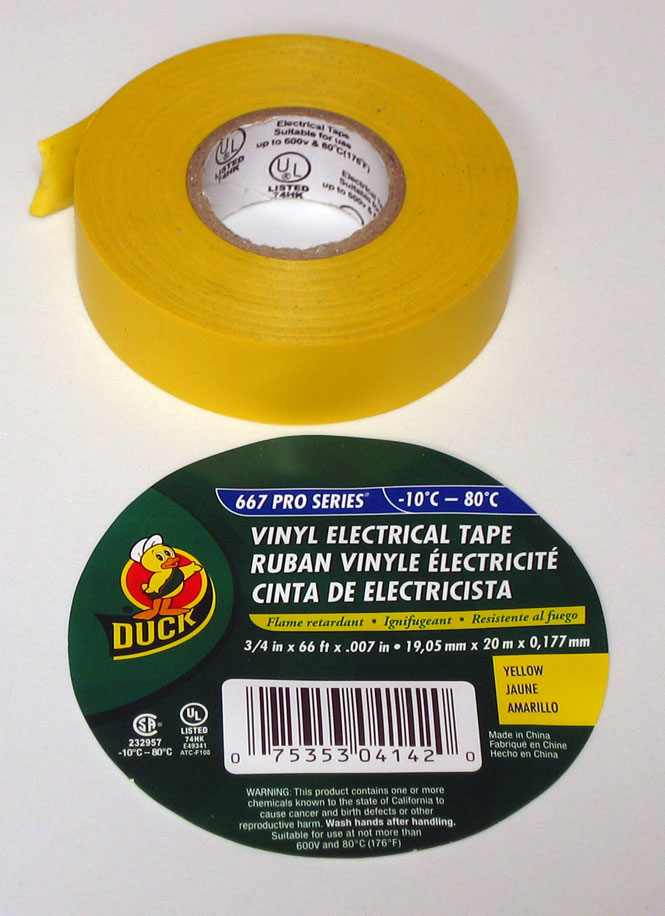
The DUCK label included a warning:
WARNING: This product contains one or more chemicals known to the State of California to cause cancer and birth defects or other reproductive harm. Wash hands after handling.
How practical is that? Pity the poor electrician using this junk, potentially every hour of every workday for his or her entire career. Or pity the poor customers with electrical boxes stuffed with wires insulated with this tape. If I washed my hands after touching every piece of toxic junk from China, I'd spend a big chunk of my life doing that, and my skin would be drier than a desert.
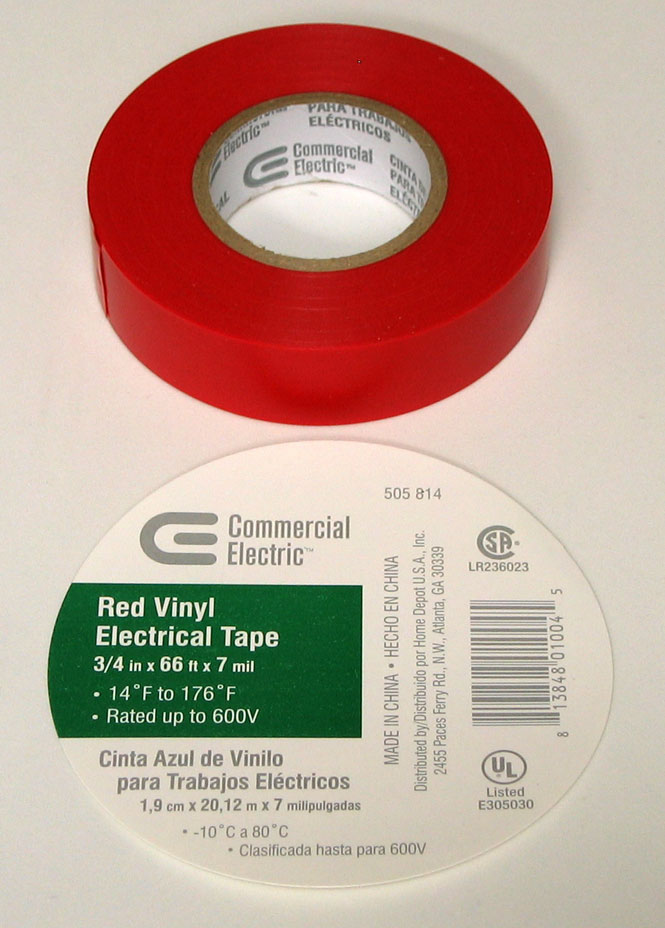
I've purchased some DUCK brand tape (not electrical tape) that was reasonable quality, but I'd never buy their electrical tape again, nor would I buy the stuff from Commercial Electric. Why would I? One big-box lumber warehouse charges the same for this as the made-in-America 3M brand that is lead-free and noticeably superior, with better adhesive, better backing, and superior cold-weather performance despite 3M's characteristically understated temperature range.
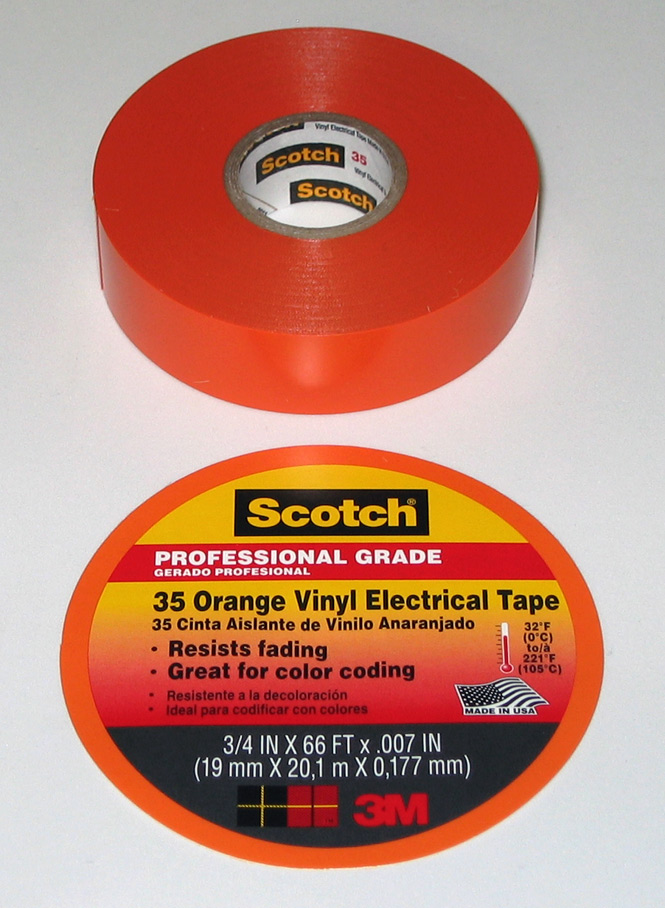
Case study: Tool Shop® self-destructing spring clamps
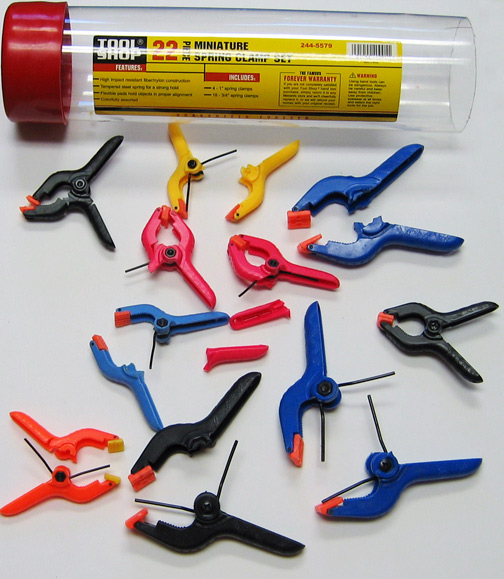
These are some of the junkiest tools ever made. Most of them broke the first time I opened the clamps, using just enough force to do that. I stored the intact clamps in the storage tube and opened it about two years later, finding that all but one clamp had self-destructed. The intact clamp (the small black one on the right) also self-destructed during the few minutes of this photo shoot without being touched.
Did I just get a bad batch? That's very improbable because the different sizes and colors indicate they were not manufactured at the same time or in the same molds.
With 22 clamps and 22 failures, this made-in-China junk batted .000.
Case study: Flimsy, dangerous pizza cutter
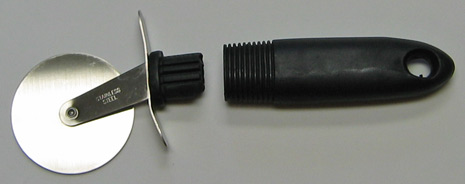
This pizza cutter fell apart after a few uses. I was applying firm pressure to cut a pizza because it took firm pressure to cut that (and other) pizza when the handle suddenly fell off, causing my hand to almost hit the pizza wheel. Had that happened, I would have needed surgery. The handle is molded rubber and isn't strong enough to securely hold the pizza wheel—something any child could easily figure out. The question is, why couldn't the engineer who designed this safety nightmare?
Case study: CD player/radio with pathetic sound quality
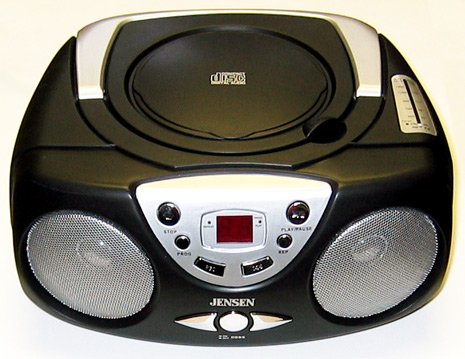
This Jensen® CD player repeatedly skips while playing discs without visible defects that play perfectly in various CD players made in Japan. The flaw in this junky product was not a result of it being worn out; it botched disc playback the first time it was used, and every time thereafter. It will sometimes advance to the next CD track, but often repeats the one just played. Its AM/FM radio has noticeably worse sound quality than the first 2-transistor radio I made as a teenager just getting started in electronics. Jensen® once was a brand name that signified quality, but the attention to detail in this product is so poor that its label says “Made in china” instead of “Made in China.”
Case study: Hair dryer that excels in dying, not drying
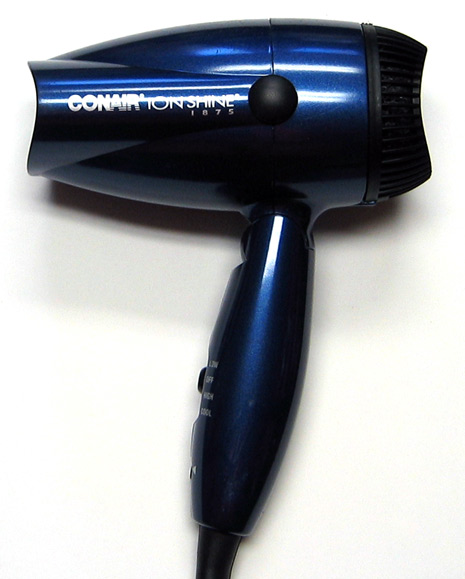
This made-in-China hair dryer still looks shiny and new after a few months of occasional use by one person, but it emits sounds that signal that it is dying prematurely, as have countless other made-in-China hair dryers I've owned. In contrast, a hair dryer not made in China lasted many years when used by my entire family decades ago when all of the kids had long hair thicker than fur.
Case study: made-in-China boots
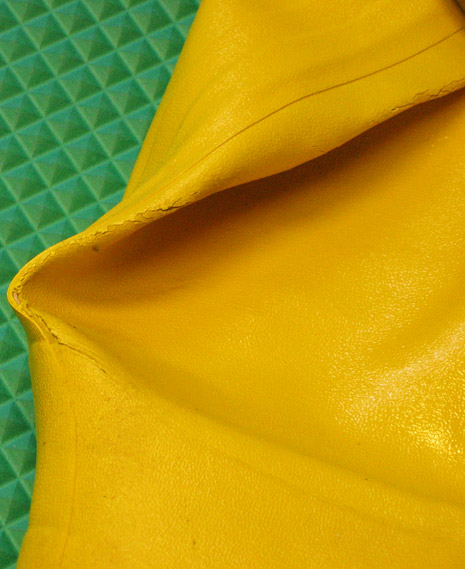
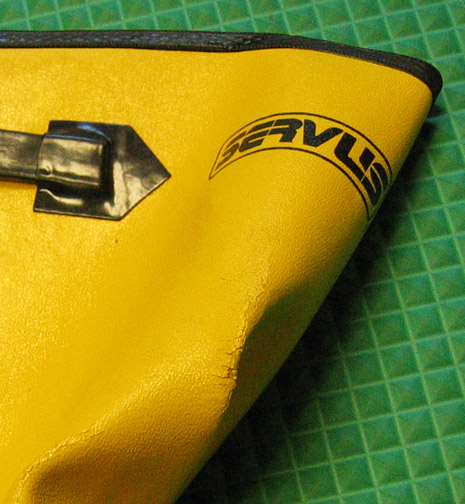
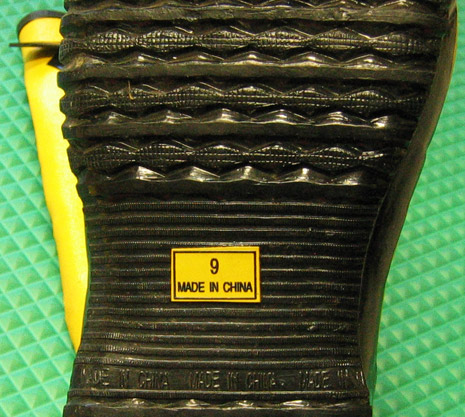
These boots began cracking after four short (< 10 minute) uses. Cracking is obviously the last thing you want in a boot intended to be waterproof. The manufacturer gave little attention to the quality of these boots but put plenty of time into making sure we knew they were made in China.
Case study: Hamilton Beach WaveAction™ blender
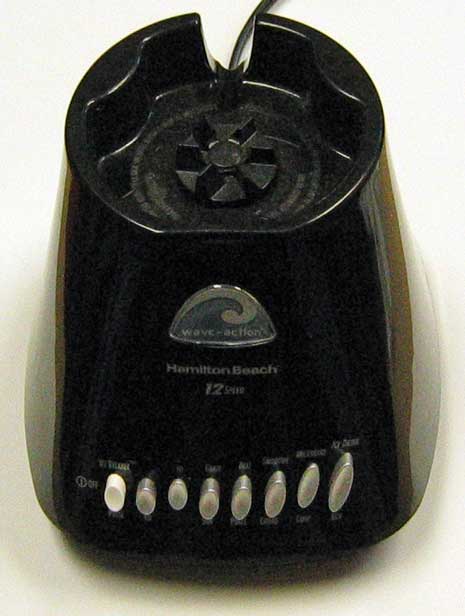
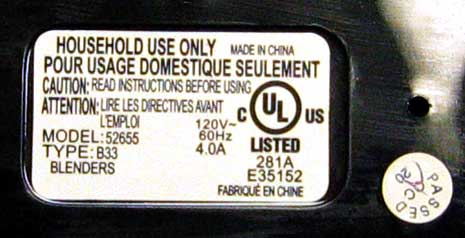
This blender performed well for about a dozen uses making smoothies, but then it began emitting a strong (and likely toxic) electrical burning odor. Contrast that premature death with some made-in-America kitchen appliances I have that still perform like new even though they were made in the 1950s, 1960s, and 1970s.
Making smoothies is a popular application that blenders should be able to withstand, but it is clearly too much for this piece of junk. The round sticker in the bottom image suggests this blender passed quality control, but my idea of quality is vastly different from what Hamilton Beach evidently thinks is good enough for consumers. An Amazon reviewer using a Hamilton Beach 52655 blender to make smoothies said it gave off “a burning smell” during its third use, after which it “wouldn't work.”
A purchased a new Hamilton Beach toaster oven with tiny (but dangerous) flecks of metal loosely adhering to all sides of its oven cavity, including the top, which means they could fall onto food when heat loosened the presumably oily or greasy film that made them cling to the surfaces. It took about one hour of scrubbing with countless sheets of paper towel before I was reasonably certain I removed the most hazardous ones. Positively shameful lack of quality or concern for customers.
Case study: Made-in-China throttle cable
A tractor throttle cable made in the USA lasted 40 years; a made-in-China replacement lasted about 40 minutes of use.
It's no mystery why so many made-in-China products are garbage from the get-go or soon thereafter: what Americans pay for them is a small fraction of what Chinese manufacturers are paid to make them. For example, they can be paid $15 or less to make full-size toaster ovens that retail for $80 to $150 or more. Frankly, it's a miracle they can make products so inexpensively. The real culprits aren't the struggling Chinese manufacturers but the American importers who are so inefficient and stupid they can stay in business only by buying cheap junk and grossly inflating its price.
This price inflation applies to countless products. For example, as an inventor, I often must contact manufacturers directly. After decades of doing that, I learned these “manufacturers” often make nothing except profits; they typically import everything they sell, sometimes with their brand name slapped on it. I also discovered that their representatives, including engineers, know little or nothing about their products. What they know can usually be summed up in a few sentences; scratch below that surface and there's nothing but ignorance from small minds so lazy they don't care they don't know! Not one manufacturer has ever expressed any interest in improving their products, even after prompting. They seemingly feel they don't make it, so why should they care about making it better?
I'm not anti-Chinese products; I am anti-junk, no matter where it is produced. I feel no obligation to buy American products if the workers who produced them want an arm and a leg for stuff that doesn't last and gives me gray hair, but made-in-USA products are usually good quality at a reasonable price—and a great value considering their longevity and safety. Competition is ultimately good for consumers, but the Chinese are so incredibly clever that they were able to pull the wool over the eyes of people around the globe, hooking them on McChina stuff with prices so low we couldn't pass them up, but with hidden price tags we cannot afford.
Although brilliant, China needed help in pulling the wool over our eyes. It got it from Wal-Mart and big-box stores like it, which are myopically—even insanely—obsessed with low prices, not product quality and ultimate long-term prices.
Based on what I've heard from multiple sources, Wal-Mart strong-arms its suppliers into selling them products at such low cost that producers usually can afford to have them made in China only. An American manufacturer who wanted to pay his workers good wages and benefits, and give them enough time to make quality products, would often not have a chance with chains like Wal-Mart that prefer to sell McJunk because it is initially cheaper.
More gray hairs for consumers? A greater net cost for them? Ultimately more energy wasted? Who cares? The Walton family that owns Wal-Mart has made much more money than Bill Gates by selling us junk that fills our landfills and helps pollute our environment and destroy our economy.
The Walton Family Foundation gives token amounts of money to pull the wool over our eyes in another way: trying to dupe us into thinking they care. However, based on the paltry wages and benefits they pay their employees, the three children of Wal-Mart founder Sam Walton care more about themselves than their 1 - 2 million employees and families who struggle to survive on the breadcrumbs they're given.
Sure, no one is forcing those employees to work like slaves so the Waltons can live better than kings. In theory, the employees could work for other businesses, but the Wal-Mart “price is everything” myopia has infected other businesses (often in a desperate attempt to compete with them) who also pay peanuts. Thus, employees can choose to have a chain wrapped around their ankles by working at Wal-Mart or a clone of it.
We're paying a high price for low prices, and the Waltons are laughing all the way to the bank. They're also laughing at us and our price myopia.
You do know what myopia means, don't you?
It means shortsightedness.
Think about it.
Here is something else to ponder: Would we be better off if the Walton family or the Bosch family dictated how our products were made? The answer is obvious.
“For those who missed the earlier part of the show, here's a quick recap: On Jan. 23 the SAIC announced that in a sampling inspection, 63% of the products sold on Alibaba's online [Chinese] Taobao marketplace were found to be ‘unauthentic’ – meaning they were fake, discredited or came through unauthorized channels.”
— Heng Shao, Forbes Staff
Related articles
East meets West, China poisons our products, die, Americans!
Notes:
- January 4, 2023: Your stuff is actually worse now: How the cult of consumerism ushered in an era of badly made products.
- John Biggs February 22, 2011: Alibaba And The Curse Of Chinese Manufacturing
Excerpt: “These companies produce products destined for the landfill and, in their process of manufacture, they poison and destroy the earth. … while Chinese manufacturers and suppliers can be very good … there is a dark army of producers who care not a whit for anything other than saving a few cents on a wheel bolt. This race to the bottom mentality then poisons our own expectations, showing us that items that are wildly cheap are actually a better value than something built with some care and craftsmanship.
Comment: Exactly! Consumers have been hoodwinked into focusing on price, not quality. As accurate as this article was, another columnist later questioned, Is It Racist To Say That Chinese Manufacturing Leads To Low Quality Goods — And Fraud? That is ridiculous because people have a right to complain about this significant problem; irresponsible allegations of racism should not shield Chinese manufacturers from criticism.
Secondly, journalists shilling for China should understand that it likes to accuse other nations of racism not only to fend off criticism of its substandard products but also because it is horribly racist, doing things that would provoke instant outrage in the United States. - Opposite of Built-In Obsolescence: Experts Urge Improving Product Quality for the Sake of Future Generations based on Promoting the growth of high quality goods and the phasing out of shoddy products
Comment: Shoddy products primarily made in China. - CBSnews.com posted a brilliant article, Made in China = Piece of Junk
- From The New York Times: Rampant Fraud Threat to China’s Brisk Ascent
- Chinese Junk: The problems underlying China's pathologies. Excerpt: “ … the Chinese are great testers of limits.”
Comment: Indeed they are; they are pushing us to see if we will continue to accept the junk they foist upon us. Most people are so far flunking this practical test of intelligence. - Book: Poorly Made in China: An Insider's Account of the Tactics Behind China's Production Game
- Researcher's new book explores history of cheap stuff in America
- Pay Now or Pay Later
Excerpt: “In the long term, we'll probably have spent just as much as if we'd bought high-quality stuff in the first place.”
Comment: I think we spend much more, and pay for it in other ways, ranging from frustration and disappointment to toxic effects (such as from lead in toys that can permanently damage children's brains). - Measuring customer value? Don't overlook product returns
- Increased production not the way to grow the economy
Excerpt: “Planned obsolescence drives consumerism — a model that begins with extraction of resources by the manufacturer, and ends with the disposal of the worn-out or unwanted product by the consumer.”
Comment: Making products in China slashes the need for planned obsolescence. - Book: The Wal-Mart Effect: How the World's Most Powerful Company Really Works—and How It's Transforming the American Economy
- The Wal-Mart You Don't Know: The giant retailer's low prices often come with a high cost. Wal-Mart's relentless pressure can crush the companies it does business with and force them to send jobs overseas. Are we shopping our way straight to the unemployment line?
Comment: Yes, we are.
Excerpt: “Wal-Mart is legendary for forcing its suppliers to redesign everything from their packaging to their computer systems.”
Comment: Do you think such redesigns improve product quality? - Epinions review: Werner metal ladder made in China junk
- Counterfeit Chinese Parts Slipping Into U.S. Military Aircraft: Report
- Billionaire paying a Chinese company to build Titanic II
Comment: I hope they don't build the lifeboats, too! :-)
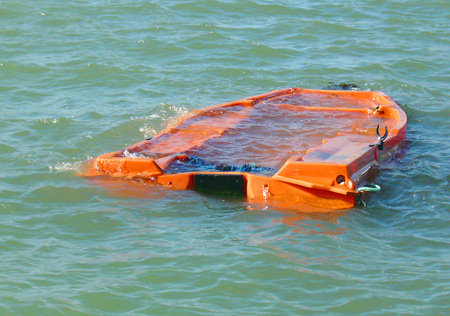
- “Our Chinese optical supplier sent us 100 sets of optics, and 96 of them were of poor quality.” (source)
- “One [hoverboard] device burnt down a house in Louisiana. Another one caught fire in a mall in Washington. For safety reasons, major airlines have banned these devices. Most fires are attributed to low quality lithium-ion batteries. Some unknown Chinese companies are making these devices.”
- U. S. Counties With Thriving Small Businesses Have Healthier Residents
Excerpt and comment: “Counties … with a greater concentration of small, locally-owned businesses have healthier populations—with lower rates of mortality, obesity and diabetes—than do those that rely on large companies with "absentee" owners,” such as Wal-Mart. Hence, Wal-Mart is harming us physically, not just financially. - The Alliance for American Manufacturing
- Made in the USA—again? Why a resurgence in US manufacturing may be the next big bet
- A Google search for made-in-china junk now returns 15.2 million matches. Here's one of them from a Canadian bar owner furious about the pathetic quality of Chinese barstools.
- Fake Luxury Goods: How To Spot
- Do You Get What You Pay For? It Depends On Your Culture
- What Does an Angry Customer Cost?
- The U.S. is a global manufacturing 'rising star,' for pretty depressing reasons
- Is Walmart Signaling the End of China’s Global Dominance?
Comment: This isn't the first time Wal-Mart made token efforts to buy American products. It would be great if they finally value product quality as much as they do price, but I'll believe it when I see it. - Goldberg: Wal-Mart Heiress’s Museum a Moral Blight
Comment: The four Walton family members listed in the Forbes 400 currently have a net worth ($107.1 billion) surpassing the bottom third of all Americans, many of whom work hard. What did the Waltons do to “deserve” such riches? Slide down the right birth canal. Now that takes real talent! If you use a certain popular brand of snowblower, you should know that it could have been much better but the CEO who inherited that company is fonder of arrogant close-mindedness than innovation. - This supermarket chain [not Wal-Mart] has made millionaires of hundreds of its regular employees
- Walmart Employee Hit With Felony for Snacking on Store Oreos
Excerpt: “As to why she repeatedly stole the items, Winters told police she could not afford them. Winters could not explain to police why she chose to steal "junk food" instead of legitimate food products normally associated with necessity.” - Customers Flee Wal-Mart Empty Shelves for Target, Costco
Excerpt: “A thinly spread workforce has other consequences: Longer check-out lines …”
Comment: A predictable result of the Walton family greed. - Walmart Is Falling Apart Before Our Eyes
- Why Walmart and Costco shrimp prices are so low - and why you should never buy from them again
- Drop in crime rates are less where Wal-Mart builds, study shows
- Walmart apologizes for humiliating treatment of cancer survivor
- Wal-Mart chairman: Integrity 'is our business'
Comment: The many comments following this article reveal that (1) no one seems to believe him (2) “integrity” and “Wal-Mart” are such oxymorons that they evoke derisive laughter (3) there's enormous animosity toward Wal-Mart because Americans are smart enough to see how that corporation is helping destroy our nation by selling us cheap junk.
Our leaders promised that globalization would help us, and indeed it has in some ways. However, the net effect is negative. When I was young and most products purchased by Americans were made by Americans, most families did well when only the father worked—and every father I knew of worked. Now many families struggle to pay their bills even if both parents work, and many millions of people cannot find work—or if they do, they're paid peanuts. When I was a kid, the future was bright. The USA was #1 economically and seemed destined to stay on top forever. Now America's collapse is being camouflaged by massive borrowing, but it won't be long until we're spending more than one trillion dollars annually just as interest on the national debt. Then two trillion. Then poof!
Bellyaching is pointless unless the problem can be solved. This one can. Here's how to leave China in the dust.
“The test of a first-rate intelligence is the ability to hold two opposed ideas in mind at the same time and still retain the ability to function.”
— F. Scott Fitzgerald
Reference: Imagining dialogue can boost critical thinking: Excerpt: “Examining an issue as a debate or dialogue between two sides helps people apply deeper, more sophisticated reasoning …”


Comment #361 by Arthur Green
February 12 2016 09:56:02 AM
Another Problem
I hate to say it, but I believe feminism has also contributed to the financial mess in which we find ourselves. Once upon a time, two bread winners in a household was a way to have more disposable income. But, as so often happens, what was once a luxury has become a necessity. With more workers flooding the workplace, the value of labor declined. This, along with increased use of automation and foreign competition, has killed the once great industrial might of America.
REPLY FROM KEVIN PEZZI: True. In the 1960s, the average home size was smaller, families commonly had one car, and the middle-class families I knew lived comfortably with just the father working. My second home (post-medical school) had a game room as big as the entire home I grew up in, which did not feel cramped. The average home once had one bathroom; now it has two or three.
Thus I think many Americans allowed themselves to be enslaved by stuff, but chasing more of it left them less free time to use it. I made the same mistake, which I think first occurred to me while vacuuming that game room, which (when vacuuming) seemed as large as a football field. That's one reason I created the Microhome Living website and (free) book.